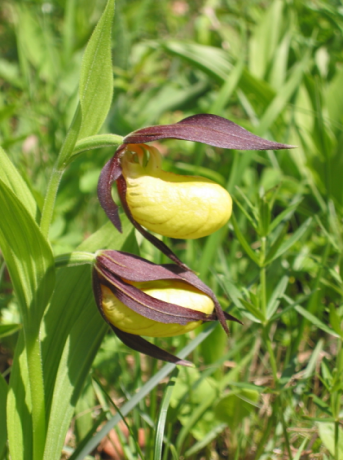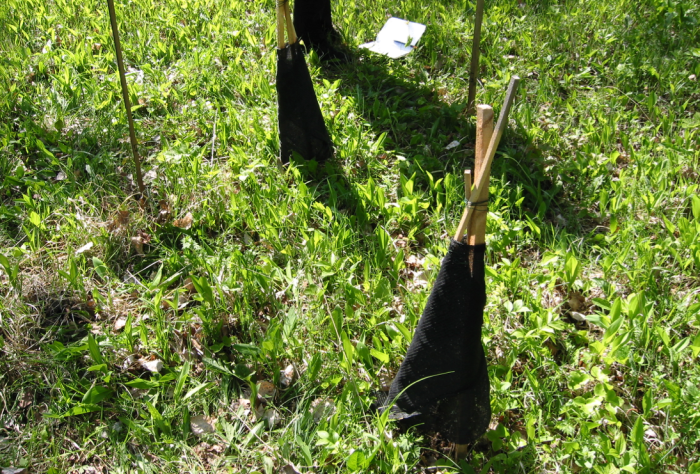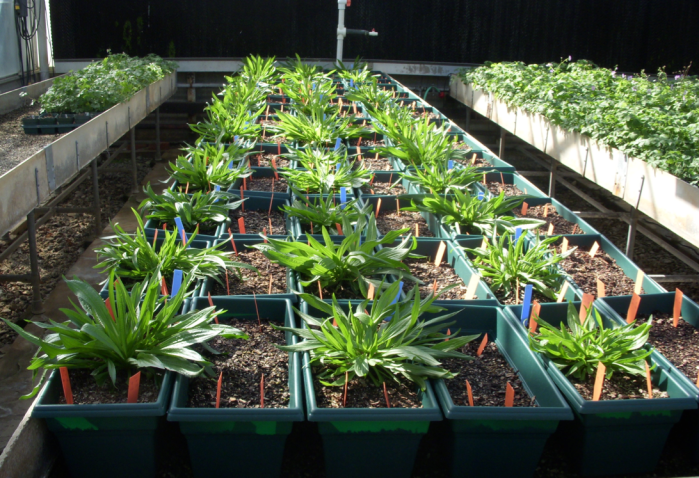 Richard P. Shefferson is an Associate Professor at the Organization for Programs on Environmental Sciences; a relatively new unit within the University of Tokyo aimed at research on global environmental problems and the fundamental sciences related to them.
Richard P. Shefferson is an Associate Professor at the Organization for Programs on Environmental Sciences; a relatively new unit within the University of Tokyo aimed at research on global environmental problems and the fundamental sciences related to them.
He is an evolutionary ecologist studying life history evolution in long-lived plants and fungi, and the evolution of plant-microbial symbioses. He earned his PhD in Integrative Biology (i.e., evolutionary biology) from the University of California at Berkeley, and worked as an Assistant Professor at the Odum School of Ecology at the University of Georgia prior to coming to Tokyo in 2014.
Rich is passionate about the truly odd aspects of biology, in particular why plants and fungi do the truly strange things that they do. Rethinking the basic assumptions of plant life histories has always been the first step of that drive.
The Trade-off Is Dead! Long Live the Trade-off!
It has often been said that biology has no laws. In comparison to physics, where laws are viewed as absolute (though with enough malleability for improvement, as Einstein showed), biological principles seemingly always have exceptions. Some of us who study biology are rather in love with these exceptions (as I am unashamedly in love with ghost orchids, photosynthetic snails, and other things that go bump in the evolutionary night).
Indeed, perhaps the closest we come to a true law in biology is that all things that live must at some time die; though even in this case, we most likely lack the theory to make this a true law. Perhaps, other than this, the closest we come to a true law in biology is that evolution can never optimize all fitness-related traits in any lineage. This particular “near law” stems from the fact that Darwinian demons, or species in which fitness is maximized to infinity, do not and probably cannot exist (Law, 1979). The reason, is the trade-off.
When I started as a graduate student at the University of California at Berkeley, I initially worked on conservation problems in plant populations. As I gained proficiency with the background literature and the methods, I started reading life history theory, particularly Stephen Stearns’ classic text on the subject (Stephen C. Stearns, 1992), and began getting interested in evolutionary questions. It was at this time, in my 2nd semester of graduate school, as I explored some of the papers cited in that classic volume, that I read a paper that launched my own particular path in evolutionary ecology.
This inspirational paper was “Costs of reproduction: an evaluation of the empirical evidence”, written by David N. Reznick and published in Oikos (1985). Now, David has never been a plant biologist, instead working on problems in evolutionary biology using poecilioid fish (most notoriously, the guppy). Yet David has had a strong tendency over the years to target questions universal to life, and this paper is an example. This paper inspired me because of its irreverence and fundamental questioning of a topic that I simply assumed was already well understood within biology – the concept of the trade-off. I came away from this paper realizing that it was not.
The simplest biological definition of the trade-off is that it is the allocation of finite resource(s) between two or more traits, yielding a negative phenotypic correlation between those traits. Certainly, the classic presentation of the trade-off in biology textbooks is exactly this, implying both an observed phenomenon and underlying mechanism, and this presentation leads to an inherently physiological understanding. But here was a paper that challenged this view, and dug into the question of what a trade-off really is. It manages to accomplish this via a rethinking of the role of this concept within biology, and the imperfect success that biologists have had in finding trade-offs empirically.

Figure 1. Cypripedium calceolus has been the subject of a number of my own attempts to understand trade-offs in long-lived plants. Here, a dual-flowered inflorescence from Estonia.
David’s paper identified four kinds of empirical studies of trade-offs. The first, the phenotypic correlation, includes the observation and measurement of two or more traits among the individuals of a population, followed by the assessment of a statistical correlation. For example, we might posit that a cost of reproduction to survival exists in a population of lady’s slipper orchids (Figure 1), and compare the annual mortality of plants that flower in a given year to those that do not. If the orchids that do not flower have a higher survival, then we infer a trade-off. The second, the experimental manipulation, is similar to the phenotypic correlation except that individuals are manipulated in order to attempt to force one of the traits of interest to change. If the change is followed by a negatively correlated shift in the other trait of interest (relative to a control), then we have experimental evidence of a trade-off. Classic studies along these lines are pollination experiments, in which the fates of plants with experimentally pollinated flowers are compared to those of flowering plants with pollinators excluded.
The preceding two methods are the most commonly performed studies of trade-offs to this day. Intriguingly, David challenged the reader by stating that these two methods do not really get at the heart of the trade-off, because they ignore its evolutionary implications. The trade-off is often used as a model of evolution – we expect that constraints of some sort produce situations in which species move up – or downslope of a negatively-sloped relationship between two traits. He argued that the simple observation of a negative phenotypic correlation between two traits in the wild, or even in an experiment, was insufficient because it is not clear what would actually happen should the traits be subject to natural selection. If natural selection favored an increase in one of those traits, would it necessarily produce a decrease in the other? A number of important studies suggest that this is not necessarily the case, with one particular case of dramatically shifting “trade-offs” leading to a later paper by David re-assessing the state of the trade-off literature 15 years later (Reznick, Nunney, & Tessier, 2000; Spitze, 1991; Spitze, Burnson, & Lynch, 1991), and one more recent paper showing empirically that trade-offs can be removed via selection (Delph, Steven, Anderson, Herlihy, & Brodie, 2011).

Figure 2. Colleagues Tiiu Kull and Kadri Tali of the Estonian University of Life Sciences once used an experimental approach to assess the impacts of dormancy on the life history of two orchid species, Cypripedium calceolus and Cephalanthera longifolia (Shefferson, Kull, & Tali, 2005). Here, we can see the experimental plots where plants were exposed to either defoliation or shading, or left as controls.
The shortcomings inherent in the first two types of studies led David to advocate two other methods instead. The first of these methods, the genetic correlation, involves conducting controlled breeding studies, followed by measuring traits and estimating correlations between the traits of interest across kin. For example, we might conduct a study in which a paternal half-sib design was used to breed the orchids mentioned earlier, and the phenotypes would be measured in the resulting progeny and used to test for genetic correlations among important traits. Such an approach might even be used to assess the heritability of the correlation itself, which could lead to an assessment of the evolvability of said trade-off. If a negative phenotypic correlation between two variables masked no overall genetic correlation, then it would be extremely unlikely that selection for an increase in one of these variables would lead to a decrease in the other. Thus, the phenotypically “obvious” trade-off would actually be an apparent trade-off only, masking no real constraining relationship between the traits. The second of these methods, the selection analysis, takes the previous method further by actually assessing the evolutionary response to selection of two or more traits set in a controlled breeding design. In some ways, this last method might be the closest to a smoking gun for an evolutionary trade-off, as David defined it, and 15 years later he pushed much more strongly for this approach (Reznick et al., 2000).
David challenged readers in two ways: 1) by forcing them to reevaluate what this basic concept really meant, and what implications its common biological definition entailed, and 2) by analyzing available data at the time to show how effective each method was in finding these trade-offs. Most notably with regards to the latter is that the phenotypic correlation, which is the most commonly used approach to identify trade-offs to this day, quite often does not find trade-offs. In contrast, the other three methods had nearly flawless success in finding trade-offs, at least at the time of writing several decades ago.
The paper has inspired a great deal of re-assessment over the years, with many surprising results, including the recent realization that trade-offs may produce rather bizarre patterns due to their interactions within organisms either because organisms are complex and include many interacting processes using multiple trade-off currencies (Cohen, Isaksson, & Salguero-Gómez, 2017), or because they may interact via biochemical and gene expression pathways only capable of being understood when genomics and transcriptomics are fit in (Stearns & Magwene, 2003).

Figure 3. My own wish to deal more explicitly with the evolutionary heart of the trade-off led me perhaps inevitably to a model organism, Plantago lanceolata (Shefferson & Roach, 2010, 2012), which, unfortunately given my interests, sprouts every year in which it is alive.
My own work since that time has in many ways focused on the trade-off. From the beginning I was publishing work really intended to assess the evolution of demographic traits in my study plants, which have often been orchids. Unfortunately, I discovered very early on that many organisms are not easily dealt with in the framework that David developed. For example, in the case of Cypripedium parviflorum, the small yellow lady’s slipper, a species that I have worked on for 20 years now, I have never been able to develop a breeding design that would be conducive to pursuing the methods advocated by David (this has to do with their ridiculously complicated life cycles, incredibly poor rates of germination and survival to flowering, an extended subterranean juvenile period [estimated at a maximum of 16 years in some sources], and, I believe, the loathing that their little plant hearts feel for all things human). The result is work that I have done in collaboration with Deborah Roach of the University of Virginia, exploring the genetics behind demography in Plantago lanceolata. Nonetheless, my own study of these issues and David’s own caveats about the weaknesses inherent in these breeding study-focused methods suggest to me that other methods, which may or may not be as good, are certainly at least as useful from an evolutionary perspective. For example, game theoretical models have recently stormed through evolutionary demography, allowing very important and complex relationships among life history traits in long-lived plants to be far better understood than previously (e.g. Metcalf et al., 2008). The only thing missing in these sorts of studies is the estimation of additive genetic variance.
Perhaps in reading this piece, it might seem surprising to hear that a plant evolutionary ecologist like myself would list a wildlife evolutionary ecologist such as David as his biggest early inspiration. However, David’s work is inspiring as it cuts to the heart of biology by forcing us to question truly basic concepts that are really not as well-understood as we might believe. His work on trade-offs inspired a good deal of re-thinking of this basic concept by others, as well, and we now see that these basic challenges continue.
I still find myself inspired by this paper, and still find myself studying topics strongly related to it. For example, some of my recent work investigates the microevolution of mycoheterotrophy and the achlorophyllous lifestyle, and the conclusions rest on ideas involving the concept of the trade-off and how it varies across environments (Shefferson, Roy, Puttsepp, & Selosse, 2016). A further recent paper investigates the ecological and evolutionary contexts of sprouting, and finds that plants that do not sprout every year are more likely to suffer costs of sprouting to survival and reproduction that appear to make multi-year periods without sprouting adaptive (Shefferson et al., in press). In this regard, I continue to question what a trade-off is, and how it fundamentally affects the natural world that I love to study. I suspect that many of us, if we consider what motivated our work most, would mention papers similar to this – papers that challenged our own assumptions and provided us with a deeper understanding of our own scientific ignorance.
Richard Shefferson, Associate Editor, Journal of Ecology
Read other articles from our Ecological Inspirations series on the Journal of Ecology blog.

